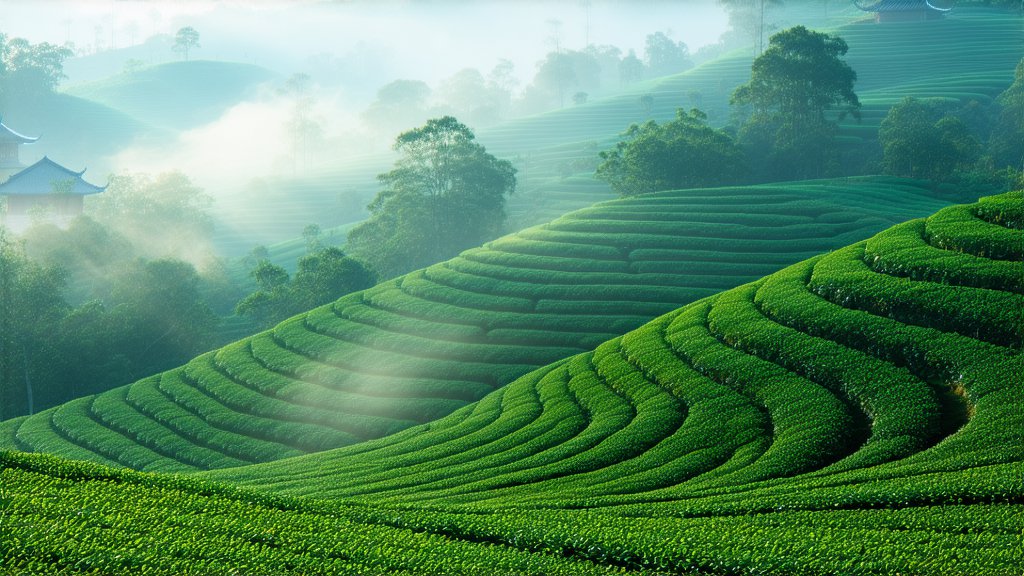
In the verdant heartlands of Hangzhou, Zhejiang Province, nestled amidst rolling hills and kissed by the gentle breezes of the West Lake, lies a treasure that has been cherished for centuries—Longjing Tea. Often referred to as "Dragon Well Tea," this emblematic Chinese green tea is not just a beverage but an embodiment of history, art, and the profound philosophy of harmony inherent in Chinese culture.
Historical Roots
Longjing Tea's journey dates back over a millennium, with its origins traced to the Tang Dynasty (618-907 AD). It was during the Qing Dynasty (1644-1912) that it gained imperial favor and became known as one of the finest teas in China. The name "Longjing," meaning "Dragon Well," is derived from a legendary spring located in the West Lake region, believed to be the abode of dragons—a symbol of power and prosperity in Chinese mythology. This association underscores the reverence bestowed upon this tea throughout history.
Varieties and Cultivation
Longjing Tea primarily belongs to the 'Flat Green Tea' category, characterized by its flat shape resembling a sparrow's tongue or a spearhead. There are two main types: Xi Hu Longjing (West Lake Dragon Well), which is considered the epitome of quality due to its limited production area along the West Lake, and Qianlong Longjing (Front Hill Dragon Well) grown outside this prestigious region but still adhering to stringent standards.
The cultivation of Longjing Tea requires meticulous care. Only specific tea bushes, often those aged between 50 to 100 years, are selected for their unique flavor profile. These bushes are typically pruned low to encourage new growth, ensuring that only the tenderest leaves and buds are harvested.
Artistry in Processing
The craftsmanship involved in producing Longjing Tea is a testament to the artisanal skill passed down through generations. The process begins with a careful handpicking of the freshest leaves, usually in early spring when they are most succulent and rich in nutrients. The freshly picked leaves undergo several stages:
-
Fixation: The leaves are quickly pan-fired at high temperatures to halt oxidation, preserving their vibrant green color and fresh aroma. This step also helps in removing excess moisture and concentrating flavors.
-
Shaping: Skilled tea masters then manually shape the leaves by pressing them against a hot wok or using specialized tools, forming the characteristic flat appearance. This process demands precision and speed to ensure uniformity without damaging the delicate leaves.
-
Drying: Finally, the shaped leaves are slowly dried to reduce moisture content further, enhancing their crispness and extending shelf life.
The Art of Tasting
To truly appreciate Longjing Tea is to engage in a sensory journey that transcends mere consumption. The ideal vessel for brewing is a glass or porcelain cup, allowing the dance of the leaves to be observed. Here's how to conduct a traditional tasting:
-
Warm the Cup: Begin by rinsing your teaware with hot water to warm it up and enhance the aroma release.
-
Measure and Infuse: Take approximately 3 grams of Longjing leaves per 150ml of water. Pour boiling water (around 80°C) over the leaves, allowing them to unfurl gracefully.
-
Observe: Watch as the leaves gradually open, releasing a pale yellow-green liquor that signifies its purity and freshness.
-
Sniff: Inhale deeply to capture the subtle fragrance—a blend of chestnut, vegetal notes, and a hint of sweetness.
-
Sip and Savor: Take small sips, letting the tea roll over your palate. Notice the initial umami taste, followed by a lingering sweetness and a clean, refreshing finish.
-
Repeat: Longjing Tea can be steeped multiple times, each infusion revealing new dimensions of flavor.
Conclusion
Longjing Tea is more than just a drink; it's an experience that connects the drinker with centuries of cultural heritage and the natural beauty of China's landscapes. Its cultivation, processing, and enjoyment encapsulate the essence of Chinese tea culture—harmony, balance, and respect for nature. As you raise your cup to savor this green elixir, allow yourself to be transported to the misty hills of Hangzhou, where every sip tells a story of tradition, artistry, and the enduring quest for perfection.